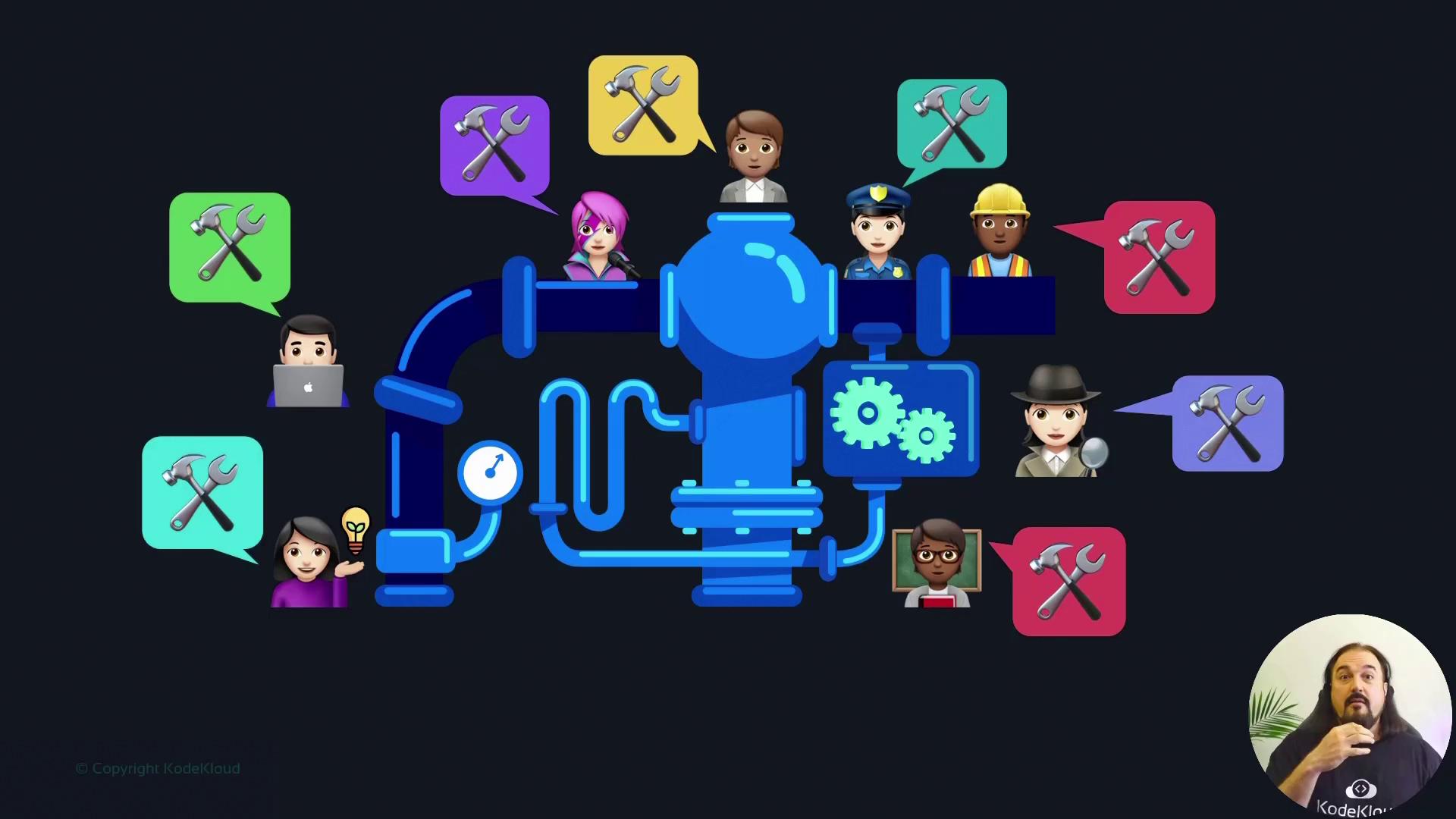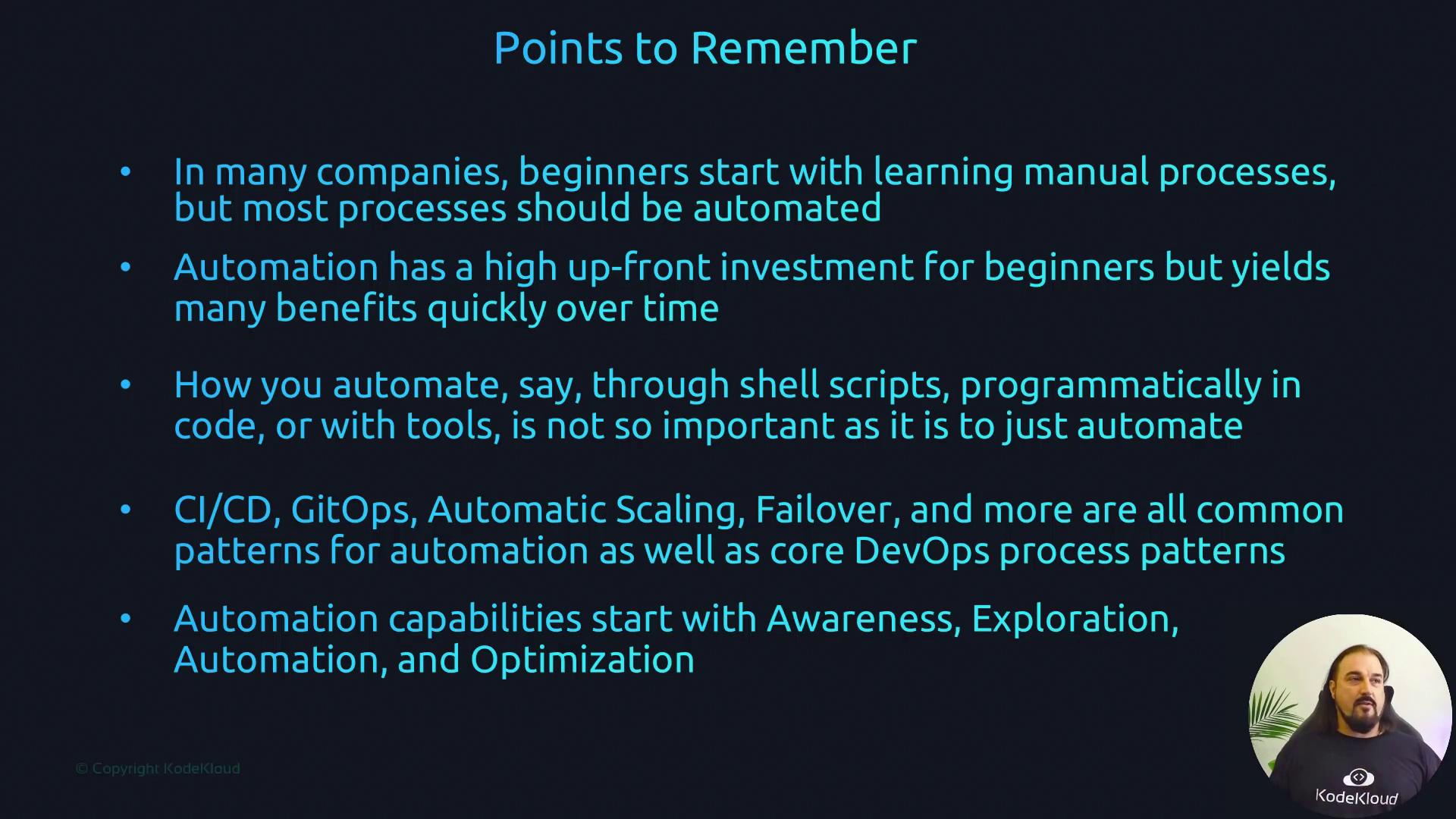Fundamentals of DevOps
Process
A Testers Scenario
Welcome to this article where we explore a common testing scenario faced by many development teams. In this story, we follow Qing and her team as they tackle a significant bottleneck in their software deployment pipeline.
The Challenge: Manual Testing Bottlenecks
Qing’s team had built an impressive deployment process—with efficient build and deployment stages—but found that the testing phase was severely impeding their progress. Manual execution of extensive tests, including compatibility and browser verification steps across multiple stages, turned what should have been a few hours into a multi-day ordeal. This extensive manual testing resulted in delays that compromised the overall workflow efficiency.

Seeking Expertise and Embracing Automation
With mounting pressure to improve their process, the team reached out to an automation expert. The expert validated their concerns and highlighted that automation was essential to reduce both human error and manual intervention. Although parts of their system had already been automated, the bulk of the testing process remained manual.
Under expert guidance, Qing’s team began to integrate tools like automated testing suites, shell scripting, and Selenium among other frameworks. This marked the beginning of a transformation toward a more streamlined and reliable system.

The Transformation Through Automation
Adopting automation proved to be a game-changer. The efficiency gains were exponential—reducing what once took days to only a few hours. By developing dedicated software "minions" for testing, provisioning, monitoring, and configuration, the team dramatically cut down on manual tasks. This shift enabled them to focus on more complex challenges that require human insight, ultimately resulting in improved software quality and faster delivery to customers.
Key Insight
Automation is not just about reducing manual effort—it’s a force multiplier that enables teams to rapidly iterate and scale their processes.
Key Takeaways
- While manual processes can serve as a starting point, automating non-critical tasks dramatically enhances efficiency.
- Though the initial setup of automation can be resource-intensive, the long-term benefits far outweigh these costs.
- Automation tools and frameworks—whether shell scripts, preferred programming languages, or dedicated testing platforms—play a crucial role in modern software development.
- Core DevOps practices such as CI/CD, GitOps, and automated scaling are vital for creating a resilient and agile pipeline.

Steps to Effective Automation
Successful automation is a continuous cycle that involves:
- Assessing current processes to pinpoint where automation can have the strongest impact.
- Exploring and selecting the right tools and frameworks.
- Implementing automation to reduce manual tasks.
- Optimizing the automation workflow based on feedback and performance metrics.
This repeatable cycle ensures ongoing improvements in efficiency while keeping the testing process agile and adaptable.
I'm Michael Forrester. Thank you for reading, and stay tuned for more insights on how automation and modern DevOps practices can revolutionize your software delivery process.
For more details about DevOps practices and automation, visit the Kubernetes Documentation and explore other resources on Docker Hub.
Watch Video
Watch video content